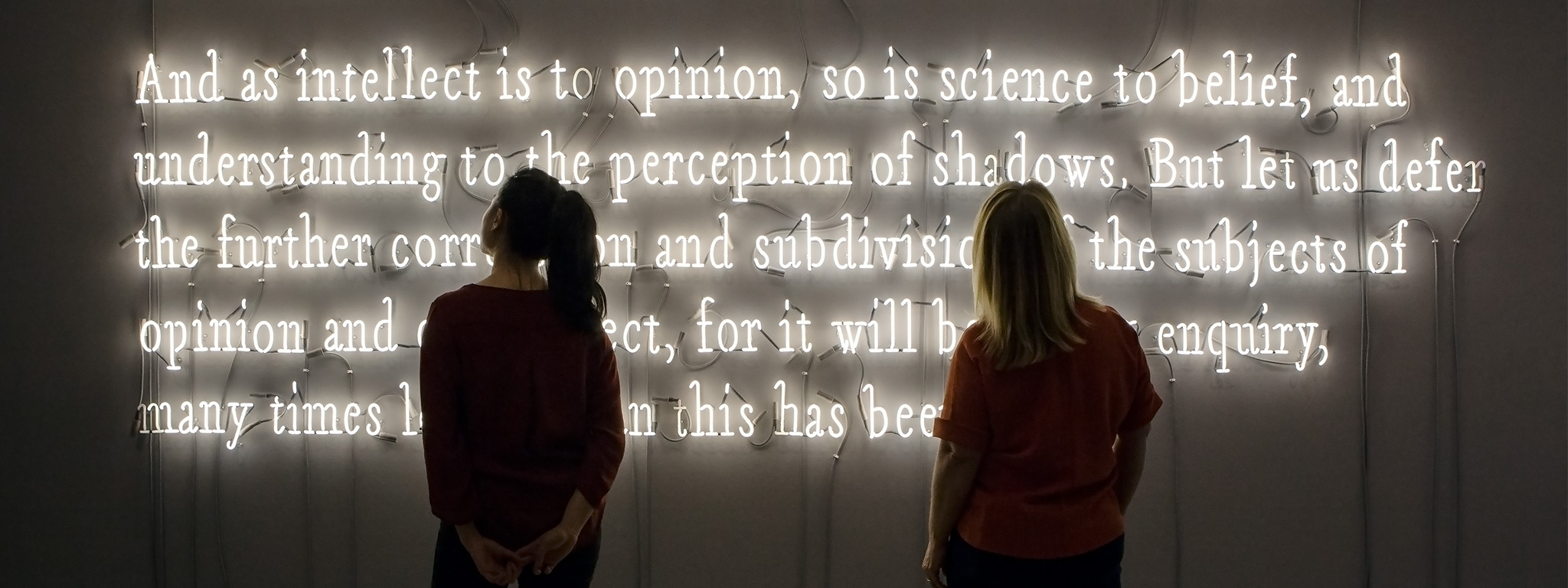Explore the Exhibition
Plato in L.A.: Contemporary Artists’ Visions
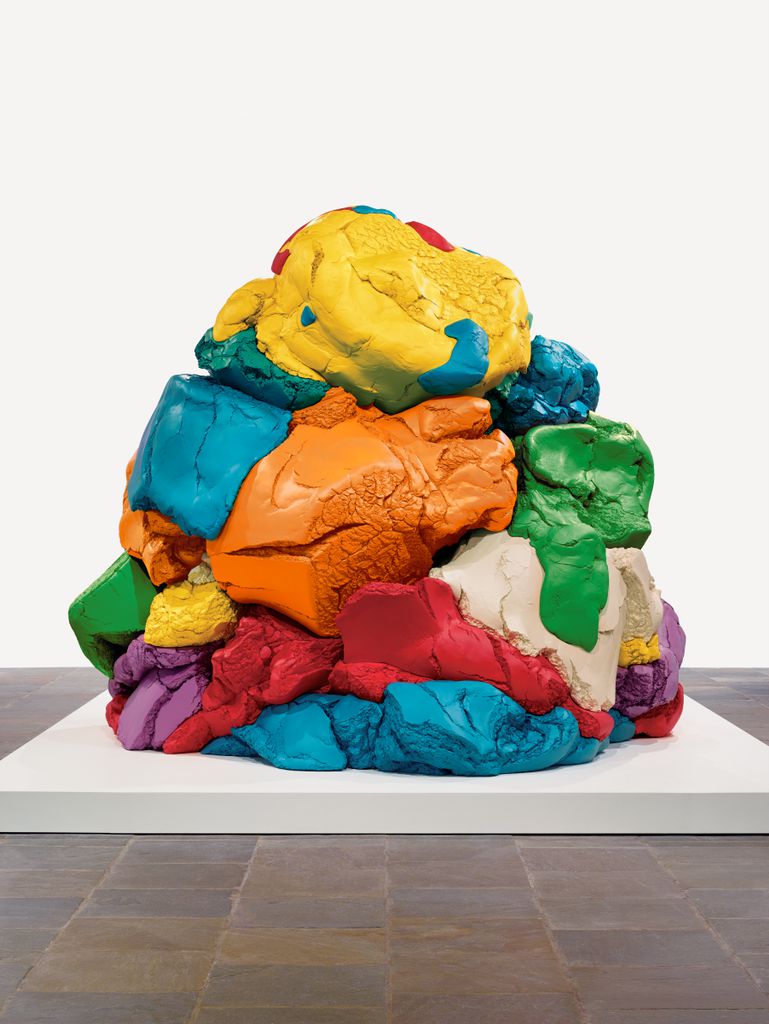
The Greek philosopher Plato (about 428–347 BC) has had a profound influence on Western culture. His writings, most composed in the form of dialogues led by his teacher Socrates, address fundamental aspects of human existence: metaphysical, ethical, and political. The questions he posed to elicit philosophical inquiry have been pondered for the last twenty-five hundred years and continue to be debated today. Above all Plato asks: What is the nature of reality beyond mere appearances, and how can we come to know it? What are the implications of this philosophical knowledge for how we should live our lives, both as individuals and as members of society?
The artists in this exhibition respond in various ways to this Platonic tradition, challenging us to reconsider our perception of the world, to reflect on our role in society, and to strive for transcendent understanding.
The works are varied in approach, medium, and message but united in their thought-provoking engagement with central issues of philosophy.
“More than anywhere else in the United States, Los Angeles is a laboratory of existential and institutional experimentation, whose inhabitants must constantly negotiate a dialogue between the traditions of Europe and the multiculturalism of the modern American city. Plato, whose spirit is ever present in Los Angeles, reminds us that for humanity to prosper, it must contemplate a higher form of itself. By making thoughts perceptible, artists invite us to adopt this premise.”
–Donatien Grau, Curator
VISUALIZATIONS OF THE TEXT
Writing, Phaedrus, has this strange quality, and is very like painting; for the creatures of painting stand like living beings, but if one asks them a question, they preserve a solemn silence.
—Plato, Phaedrus, 275d
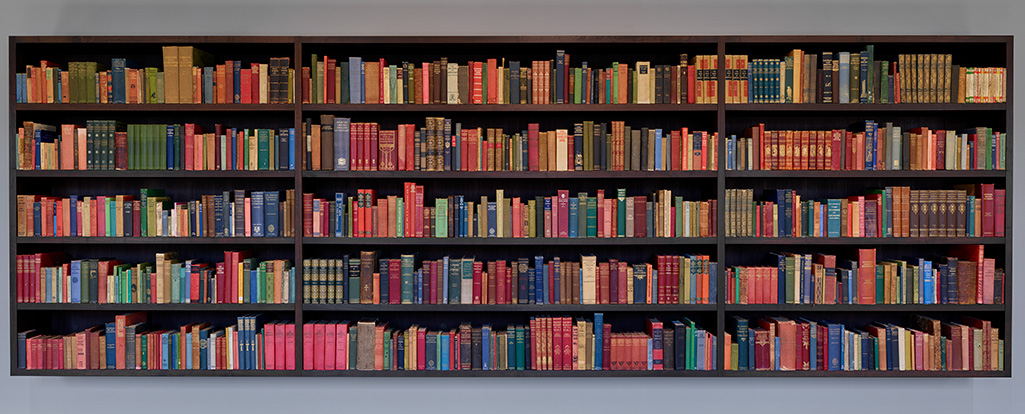
The teachings of Socrates were exclusively oral and survive only in the writings of his students Plato and Xenophon. Plato made a decision to turn these oral teachings into written text, and by doing so reinvented them. The transformation of speech into memory is an ambiguous act, both preserving and altering what was said. Plato’s philosophy flows from the written word, and the works in this section invite us to consider the shifting materiality of texts.
JOSEPH KOSUTH
Joseph Kosuth has long been recognized for his exploration of the Platonic notion of the representation of the ideal. Here he probes the ambiguity of meaning in a quotation from Plato himself.
Kosuth, born in 1945 in New York, lives and works in London.
WHITNEY McVEIGH
Divine Rules, by Whitney McVeigh, takes its title from Plato’s dialogue Theaetetus, which explores the nature of knowledge. She brings together a selection of books collected over a ten-year period that provides an entry into the many lives of the text as a reflection of the diversity of human learning.
McVeigh, born in 1968 in New York, lives and works in London.
PAUL CHAN
Le Baigneur 1, by Paul Chan, is part of a series of sculptures, “Breathers,” referring to the Greek concept of pneuma (breath), the animation of life, which in turn is movement. The concept is Plato’s and was further developed by his student Aristotle.
Chan, born in 1973 in Hong Kong, lives and works in New York.
Dialectics
This is the best way of life—to live and die in the pursuit of righteousness and all other virtues.
—Plato, Gorgias, 527e
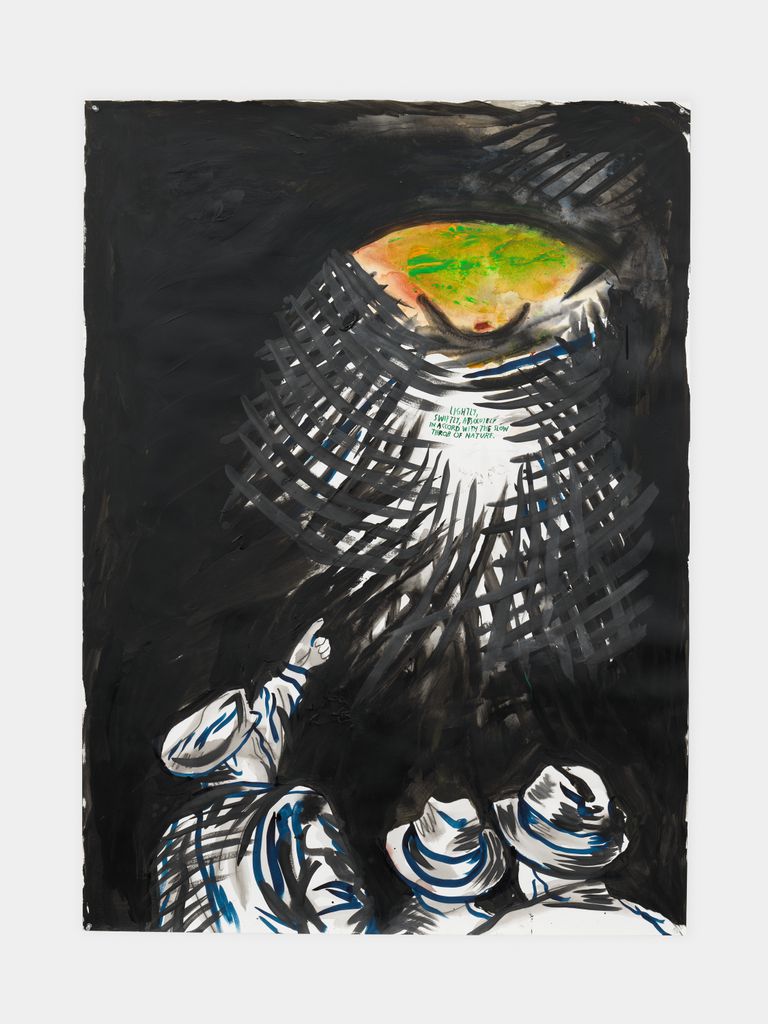
Socrates was put on trial for impiety toward the gods and “corrupting the youth,” and Plato was imprisoned in Sicily while attempting to advise the tyrant of Syracuse on how to become a philosopher-king. In its constant confrontation with injustice, the dialectical method seeks to prevail over ignorance and reluctance by questioning presuppositions and prejudices. Socrates leads his interlocutors through this process to a better understanding of the concepts at issue. In this room, the artists confront conventional views of truth and order while acknowledging the possibility of the ideal. In this way, they reenact Socrates’s dialectical process.
MIKE KELLEY
Mike Kelley’s drawing Exploring, from his series Plato’s Cave, Rothko’s Chapel, Lincoln’s Profile (1985), subverts notions of the ideal by using a variety of sources ranging from prehistory to comic books.
Kelley was born in 1954 in Detroit; he died in 2012 in Los Angeles.
PAUL McCARTHY
Paul McCarthy depicts Plato as a man confronted by the power of the Eternal Female and interacting with modern philosophers, his severe critics Friedrich Nietzsche (1844–1900) and Gilles Deleuze (1925–1995).
McCarthy, born in 1945 in Salt Lake City, lives and works in Los Angeles.
RAYMOND PETTIBON
Raymond Pettibon engages with Platonic themes, such as geometry, music, and ideal Forms, and places them in dialogue with images from both high and low culture, including religion and politics.
Pettibon, born in 1957 in Tucson, lives and works in New York.
CONTEMPLATING THE IDEAL
The forms that enter and depart are copies of those that are always existent, being stamped from them in a fashion marvelous and hard to describe.
—Plato, Timaeus, 50c
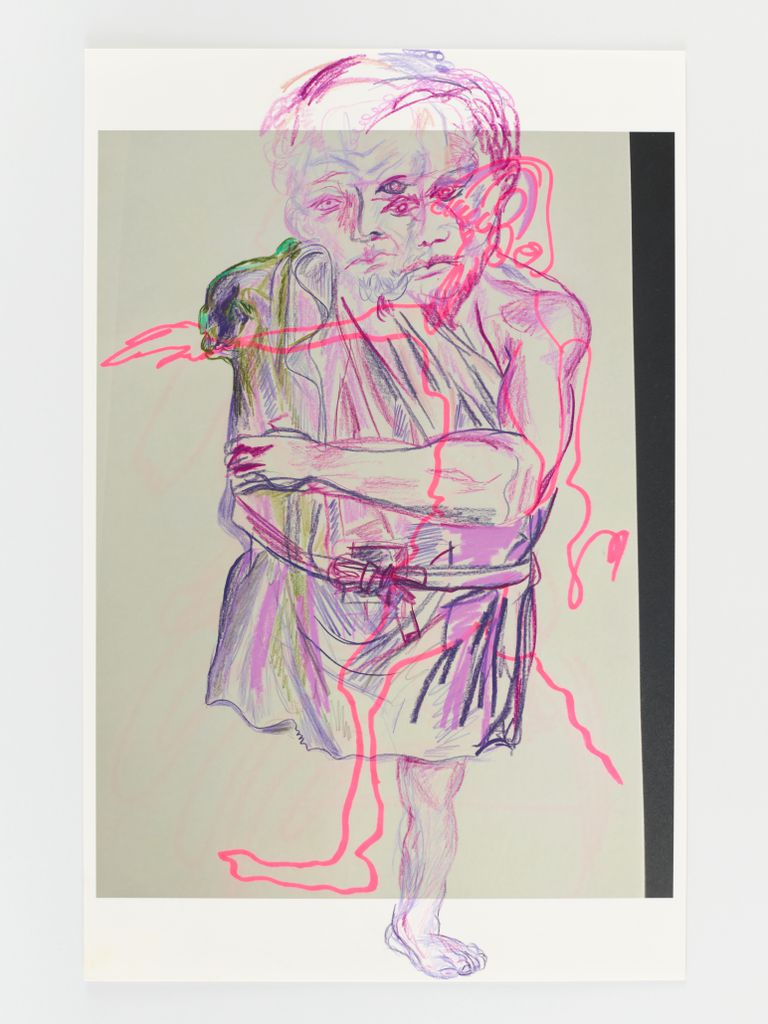
Central to Platonic philosophy is the contemplation of the eidos, the ideal Form of the good, beautiful, just, and other fundamental concepts. According to Plato, one is to love beautiful bodies first, then beautiful minds, and finally the eidos of beauty—that is, the transcendent form of beauty. The realm of the eidos is the space of truth.
RACHEL HARRISON
By bringing together diverse images of ancient Greek sculptures, Rachel Harrison invites the viewer to contemplate the eidos. She imparts new meaning to classical forms traditionally considered “ideal.”
Harrison was born in 1966 in New York, where she lives and works.
JEFF KOONS
Jeff Koons’s sculpture Play-Doh transforms the material used by children into an eidos of its own, the ideal Form of banality. The Platonic contemplation represented in this work is a process of abstraction achieved by dedicated and precise labor: the work took twenty years to complete.
Koons, born in 1955 in York, Pennsylvania, lives and works in New York.
THE POLITICAL CAVE
...just as puppet showmen have screens in front of them at which they work their puppets.
—Plato, Republic, 514a
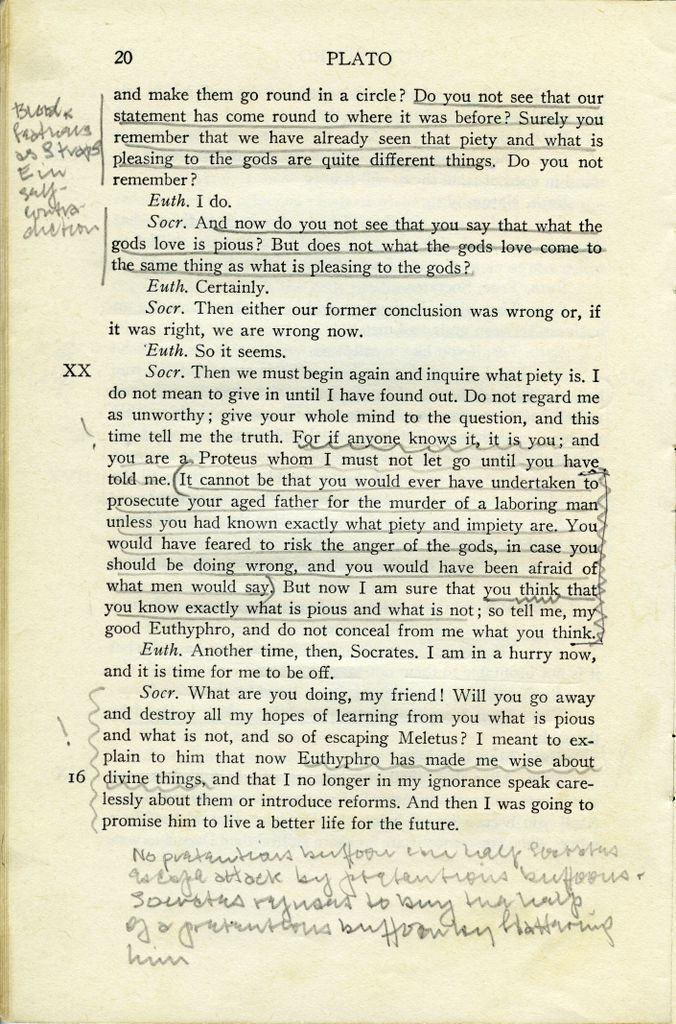
Socrates relates the Allegory of the Cave in the seventh book of Plato’s Republic. A group of people in a cave, chained so that they cannot move or turn, watch shadows of passing objects cast by a fire behind them, which they take for reality. The passage continues with a warning about the predicament of the individual who has left the cave and seen real objects in the light of day, who then returns to tell those he left behind that the shadows on the wall are not true beings, but mere representations. If he simply asserts this, he risks being killed for contradicting their vision of the world. Only if he guides them by persuasion to the daylight will they come to understand what is real and what mere illusion. The allegory illustrates Plato’s thesis that ideal Forms are the true, eternal reality, and that we must be led by philosophy to escape the cave of ignorance in which we dwell.
HUANG YONG PING
Caverne 2009, by the Chinese artist Huang Yong Ping, uses Plato’s famous allegory to comment on contemporary politics. The work includes figures of the Taliban as well as the ancient statues of the Buddhas at Bamiyan in Afghanistan that they demolished, highlighting the destructive power of ignorance in confrontation with artistic representations.
Huang Yong Ping, born in 1954 in Xiame, China, lives and works in Paris.
MICHELANGELO PISTOLETTO
Since 1961, Michelangelo Pistoletto has produced mirror paintings picturing all types of men and women as a means of questioning the nature of reality itself. His most recent series depicts scenes from Cuban life after the country’s economic liberalization.
Pistoletto was born in 1933 in Biella, Italy, where he lives and works.
ADRIAN PIPER
Adrian Piper offers her notes on Plato’s Euthyphro at the point where Euthyphro and Socrates define piety. The work brings together her activities as both a visual artist and a scholar of philosophy.
Piper, born in 1948 in New York, lives and works in Berlin.
